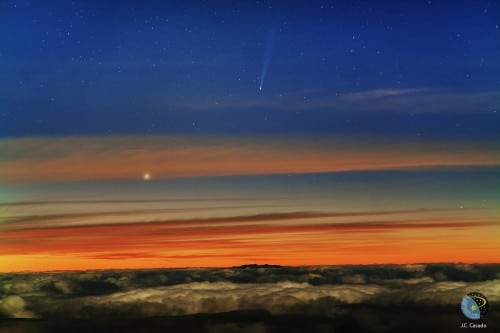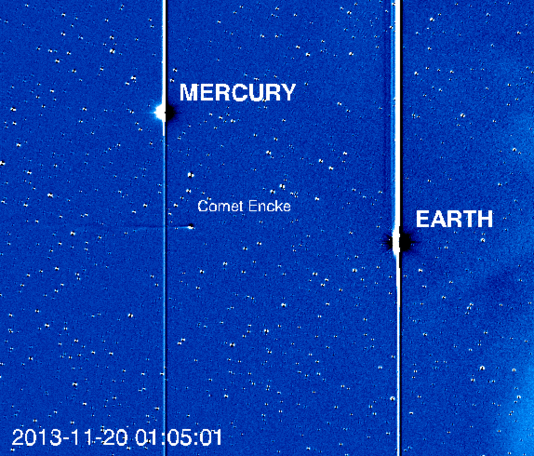Nir Lahav updates on the beauty of winter and the comet Aison is also approaching the sun and brightening, can we see it with the naked eye?

Update 29 / 11 / 13 Comet Ison most likely disintegrated as it approached the Sun
This coming Thursday, November 28.11.13, XNUMX, we may be able to see Comet Ison right after sunset without using a telescope or binoculars
According to Wikipedia "A comet is a small celestial body similar to an asteroid, but composed mainly of ice. The comet moves around the Sun in an extremely elliptical orbit, and as it approaches it, it forms a long and bright tail that is millions of kilometers long. At one end of the orbit, the comets pass close to the Sun, at a distance of several million kilometers from it, but at the other end they are much farther away, often farther than all the other planets at that point, and they are billions of kilometers away from the Sun."
Comet Ison is now very close to the sun and is getting closer to it every day until Thursday 28.11.13 when Ison will be at its closest distance to the sun. The closer the comet is to the sun, the more it heats it up and thus the ice in it melts and the chemical substances that were trapped in the ice are released from it and melt as well. The result is a long and beautiful tail that starts from the center of the comet and is pushed away from it and the sun (the sun emits gases and particles with an electric charge, a phenomenon called the solar wind and they are the ones that push the comet's tail away from the sun and the center of the comet).
Already in the last few days, astronomers notice how Comet Ison and its tail are getting stronger and brighter. If Ison survives the approach to the Sun and does not disintegrate from the intensity of the heat, it is expected to brighten even more and we may be able to see it and its tail right after sunset this Thursday. The expected temperature for Ison when it will be closest to the sun is 2700 degrees Celsius, a temperature where even iron is already melted!

Right now you can already see Comet Ison early in the morning just before sunrise. On Thursday it is expected to orbit the sun so we can see it around sunset. He will probably see within the halo of light around the sun, so in order to see him you should look towards the sun so that there is an object (for example a switched off street lamp) that will hide the center of the sun and leave only the halo of light around it.
More of the topic in Hayadan:

5 תגובות
sparrow
I don't see heavy clouds and there is no particular reason for there to be such on Thursday or Friday. On the other hand, the angular proximity to the sun may prevent viewing it on Thursday and Friday, because the sky in angular proximity to the sun is not dark enough. Anyway, let's hope for the best.
The last time I saw a comet in Israel was in 97. the beginning of winter. Does anyone remember other such events since then?
It will be very difficult to see it in Israel, because medium-high clouds are expected to cover the skies of our country throughout the coming week.
But who knows, maybe we will succeed, with a little luck.